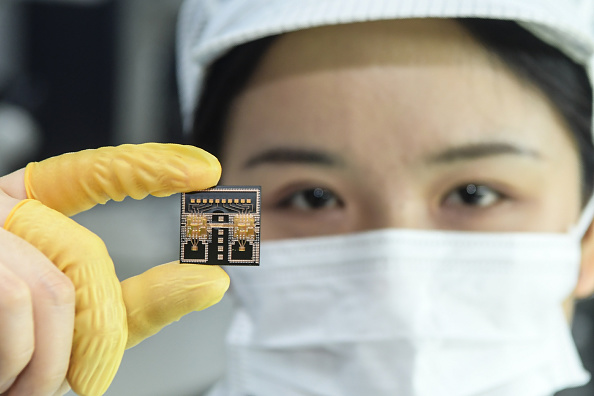Topeka Capital-Journal

Employees at Topeka's Frito Lay plant voted Saturday to reject a proposed labor contract with the company, paving the way for a strike to begin on Monday.
While workers had previously voted to go on strike last week, negotiations between Local 218 of the Bakery, Confectionery, Tobacco Workers and Grain Millers union and PepsiCo, Frito Lay's parent company, had continued in a bid to reach a deal.
Union leadership and management reached a tentative, two-year deal this week but roughly 400 of its members voted it down after two days of voting, which culminated Saturday.
Union members have criticized the company for working conditions at the plant and have pressed for a pay hike in their next deal.
More: Members of Topeka's local Frito-Lay union just voted to strike. Here's what we know.
Mark Benaka, business manager for Local 218, said the vote was "overwhelming" in its opposition to the proposed deal, which would have brought a 2% pay raise, as well as limits on mandatory overtime, among other items.
While Benaka noted management had come around on the overtime element after initial opposition, he said members likely felt the wage package was not sufficient as they voted against the offer.
"It was very decisive," Benaka said. "It is obvious we're far apart on the discretions forced on employees over the last ten years. Basically, they're not going to take it anymore."
Benaka said last month it would be the first time since the union was started in 1973 that a strike will take place.
Workers had been operating under a two-year agreement which ran out in September of 2020 and was extended through Sunday.
More: 'Ready to walk': Topeka's Frito-Lay workers take a vote that may prevent strike. Union president isn't optimistic.
In a statement, PepsiCo argued it had worked to meet the demands of workers and committed to fully continue operations at the plant in light of the strike.
"That the union membership rejected this fully recommended agreement suggests union leadership is out of touch with the sentiments of Frito-Lay employees," the statement said. "Because the union had fully recommended our tentative agreement, we do not anticipate any further negotiations with the union for the foreseeable future."
According to John Nave, executive vice president of Kansas AFL-CIO, the state's labor federation, a strike is the last thing workers want when negotiating union contracts. He expected donations from the community and other labor unions throughout the state as the strike date nears.
"It's kind of like the last line of defense," Nave said. "And that's a hard decision because it affects many, many people. Union members don't want to do that. ... But when the company fails to do a fair negotiation at the bargaining table — and history has shown (Frito-Lay has) repeatedly failed to do that — then there's no other alternative."
PepsiCo's seven divisions include Frito-Lay, one of the largest snack-selling companies in the U.S., whose Topeka plant is at 4236 S.W. Kirklawn Ave.
The Capital-Journal's Tim Hrenchir and India Yarborough contributed to this report.
/cloudfront-us-east-1.images.arcpublishing.com/gray/AT5BWMVZPJEYNLUHOTW3DRJ5FU.jpg)
By Kimberly Donahue
Published: Jul. 4, 2021
TOPEKA, Kan. (WIBW) - Frito-Lay responded to Bakery, Confectionery, Tobacco Workers and Grain Millers Local 218 union to strike this weekend after more failed negotiations.
In a statement to 13 NEWS Frito-Lay said:
“Frito-Lay and BCTGM Union Local 218 met last week and reached a fully recommended two-year agreement that included across-the-board wage increases both years of the contract and improved work rules that would have reduced overtime and hours worked.
Though each member of the union negotiating committee, including the union president, individually committed to supporting the agreement and encouraging Frito-Lay employees to vote in favor of ratifying it and Frito-Lay urged all associates to vote in favor of the fully recommended agreement (after nine months of negotiations), the agreement was voted down Saturday, July 3. While the union has suggested that Frito-Lay didn’t meet its terms, Frito-Lay had agreed to the union’s proposed economic terms. In addition, it was Frito-Lay, not the union, that proposed overtime limitations.
That the union membership rejected this fully recommended agreement suggests union leadership is out of touch with the sentiments of Frito-Lay employees. Because the union had fully recommended our tentative agreement, we do not anticipate any further negotiations with the union for the foreseeable future.
Therefore, Frito-Lay employees will be on strike effective Monday, July 5. The strike unnecessarily puts our employees at risk of economic hardship and will inevitably divide the workforce. Frito-Lay will be focused on continuing to run the operations of our plant in Topeka and has a contingency plan in place to ensure employee safety. We will continue to be attentive to the situation and welcome any employees who wish to continue to work as they are legally entitled to do so.”
The strike begins at 12:01 AM Monday.
Copyright 2021 WIBW. All rights reserved.
















